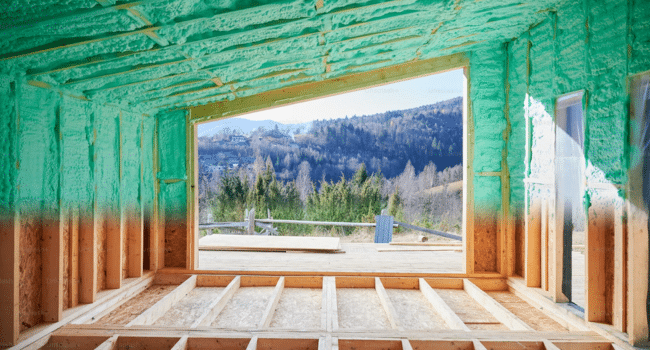In an era marked by escalating energy costs and a burgeoning emphasis on environmental sustainability, both homeowners and businesses are in a perpetual quest for strategies to bolster their buildings’ energy efficiency. Amidst a vast array of insulative materials, spray foam insulation distinguishes itself as a paramount choice, providing an extensive suite of advantages that transcend mere energy conservation. Those contemplating this avant-garde insulation technique are encouraged to visit Profoam Corporation website for in-depth insights and professional consultation.
Comprehensive Merits of Spray Foam Insulation
Spray foam insulation, a polyurethane-based foam that expands and hardens upon application, establishes an impermeable seal against both air and moisture intrusion. This seal acts as a formidable barrier against energy leakage, significantly curtailing unwanted air exchange. Its unique ability to mold to any shape and fill in crevices ensures comprehensive coverage, making it an exemplary option over traditional insulation methods for achieving optimal thermal efficiency with thermal insulation blanket.
Enhanced Energy Efficiency and Cost Savings
The allure of spray foam insulation primarily lies in its superior thermal insulating properties. By effectively sealing off gaps and crevices, it substantially minimizes air leakage, thereby reducing the energy required for heating and cooling. This thermoregulatory efficiency can result in utility cost reductions by up to 50%, as noted in several studies comparing buildings with and without spray foam insulation. The return on investment manifests not only in lower energy bills but also in the increased comfort of a consistently temperature-regulated environment.
Augmented Indoor Air Quality and Comfort
Spray foam insulation significantly elevates indoor air quality by preventing the infiltration of external pollutants, allergens, and moisture. This is particularly advantageous for individuals with respiratory conditions, as it ensures a healthier living and working environment. Furthermore, the uniform temperature control facilitated by this insulation method enhances occupant comfort, eliminating cold spots and drafts that are common in less efficiently insulated spaces.
Sustainability and Durability
The durability of spray foam insulation is unmatched, capable of maintaining its integrity and performance for decades without sagging or settling. This enduring effectiveness not only negates the need for frequent replacements but also contributes to the structural health of the building by preventing moisture-related degradations such as mold and mildew growth. Its longevity and maintenance-free nature underscore spray foam insulation as an eco-friendly option, aligning with the principles of sustainable construction.
Acoustic Benefits and Serenity
An often-overlooked advantage of spray foam insulation is its capacity to dampen sound, contributing to a quieter and more serene indoor atmosphere. This acoustic insulation is particularly beneficial in urban areas or noisy environments, where it can significantly reduce the penetration of external noise, thereby enhancing the quality of life for occupants and increasing productivity in workspaces.
Property Value Enhancement
Investing in spray foam insulation can markedly increase a property’s market value. The energy efficiency improvements and enhanced indoor environmental quality are highly attractive to prospective buyers, potentially commanding a higher sale price. This aspect of spray foam insulation makes it not only a wise choice for immediate benefits but also a strategic long-term investment.
In-depth Case Studies and Examples
To illustrate the cost-benefit analysis of spray foam insulation, consider the case of a mid-sized commercial building that transitioned from traditional fiberglass insulation to spray foam. The building experienced a 40% reduction in energy costs within the first year post-installation. Additionally, the improved air quality led to a noticeable decrease in employee sick days and a boost in productivity, further justifying the initial investment.
Another example is a residential project where spray foam insulation was applied in a historical home. The homeowners reported enhanced comfort levels due to the elimination of drafts and cold spots, alongside a significant decrease in their heating and cooling expenses. These tangible benefits, coupled with the added value to their home, exemplified the multifaceted returns on their investment in spray foam insulation.
Conclusion
Spray foam insulation represents a judicious investment for both homeowners and businesses, offering a multifaceted array of benefits that extend well beyond mere energy savings. Its impact on enhancing thermal efficiency, indoor air quality, structural durability, acoustic comfort, and overall property value provides a compelling argument for its adoption. With the added advantage of sustainability and long-term cost savings, it’s clear why spray foam insulation is considered a smart choice for those looking to invest in their property’s future.
For those seeking to explore this option further, a visit to the Profoam Corporation website is a critical first step towards making an informed decision and capitalizing on the myriad benefits that spray foam insulation has to offer.
Read More on KulFiy
6 Tips for New Construction Insulation
3 Things To Consider For Your Product Based Business
